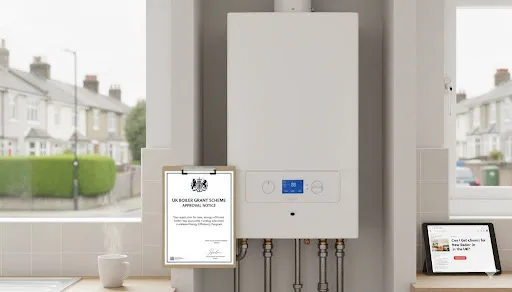How to Improve Wifi Coverage in Senior Living Communities
Picture this: A resident tries to video chat with their grandchildren, but the connection keeps dropping. Staff members can’t access patient records in certain hallways. Families touring your facility notice their phones have no signal in common areas. Sound familiar?
Wifi coverage problems aren’t just technical annoyances in senior living communities. They directly impact resident satisfaction, staff efficiency, and your facility’s reputation. As technology becomes essential for everything from telehealth appointments to entertainment, reliable Wifi throughout your entire property has moved from “nice to have” to absolutely essential.
The good news? Most coverage issues can be solved with the right approach. In this guide, we’ll walk through the specific challenges senior living facilities face with Wifi, how to identify problem areas, and practical solutions that actually work.
Why Wifi Coverage Is So Challenging in Senior Living Facilities
Senior living communities face unique obstacles when it comes to wireless coverage. Unlike residential homes or even office buildings, these facilities combine multiple factors that make reliable Wifi particularly difficult to achieve.
First, there’s the building construction itself. Many senior living facilities were built decades ago with materials that actively block wireless signals. Concrete walls, metal studs, brick exteriors, and reinforced structures create what engineers call “RF barriers” (radio frequency barriers) that wireless signals struggle to penetrate. According to networking experts, materials like concrete and metal can absorb or reflect radio waves, creating shadow zones where signals simply can’t reach.
Then consider the sheer size and layout. A typical assisted living facility spans thousands of square feet across multiple floors, with long hallways, thick walls between units, and common areas spread throughout the building. A single wireless router, no matter how powerful, simply can’t cover this kind of space effectively.
Device density adds another layer of complexity. Each resident might have a smartphone, tablet, and smart TV. Staff members carry phones and tablets for accessing electronic health records. Medical equipment increasingly relies on wireless connectivity. Security cameras, door access systems, and building management tools all compete for bandwidth. It’s not uncommon for a 100-unit facility to have 300+ devices trying to connect simultaneously.
Finally, there’s the operational reality. Unlike an office where everyone goes home at 5 PM, senior living facilities need reliable connectivity 24/7. Residents use Wifi during peak evening hours for entertainment, while staff need access during shift changes and overnight for monitoring systems.
Warning Signs Your Facility Has Coverage Problems
Before you can fix Wifi issues, you need to know where they exist. Here are the telltale signs that your senior living community has coverage gaps:
Resident complaints are mounting. If you’re hearing regular frustrations about buffering during streaming, failed video calls with family, or inability to connect in certain rooms, you have a coverage problem. Pay special attention to complaints that mention specific locations.
Dead zones in critical areas. Walk around your facility with a smartphone and watch the signal strength indicator. If it drops to one bar or zero in resident rooms, dining areas, activity spaces, or outdoor patios, those are dead zones that need immediate attention.
Staff productivity suffers. When nurses or caregivers report that they can’t access electronic medical records in certain hallways or rooms, that’s a red flag. Staff shouldn’t have to hunt for “the spot where Wifi works” to complete their duties.
Medical devices disconnect. Remote health monitoring equipment, fall detection systems, and other connected medical devices that frequently lose connection indicate serious coverage gaps. This isn’t just inconvenient, it’s a safety issue.
Touring families notice. If prospective residents or their adult children mention spotty Wifi during tours, you’re losing competitive advantage. Today’s seniors expect reliable internet access, and their families often research this amenity specifically.
Proven Strategies to Improve Wifi Coverage
Improving Wifi coverage in a senior living facility requires a methodical approach. Here are the solutions that deliver real results:
1. Start With a Professional Site Survey
Before making any changes, you need data. A professional Wifi site survey maps your entire facility, identifying signal strength in every area, sources of interference, and optimal locations for equipment.
During a site survey, technicians walk through the building with specialized equipment that measures signal strength, identifies dead zones, and detects interference from other wireless networks or electronic devices. They’ll note building materials, floor plans, and areas where residents and staff need coverage most.
This survey becomes your roadmap. Rather than guessing where to place equipment or randomly adding access points, you’ll have concrete data showing exactly what your facility needs. Most managed Wifi providers, including companies specializing in assisted living facilities, include site surveys as part of their service.
2. Deploy Multiple Access Points Strategically
One of the biggest mistakes facilities make is trying to cover a large building with just one or two routers. Consumer-grade routers simply aren’t designed for commercial environments.
Instead, deploy multiple enterprise-grade access points throughout the building. These should be positioned based on your site survey data, typically placing them in central locations on each floor, in high-traffic common areas, and along long hallways.
The key is creating overlapping coverage zones. As residents or staff move through the building, their devices should seamlessly hand off from one access point to another without dropping the connection. This requires careful planning of access point placement and proper configuration.
For senior living facilities, aim for access points that can handle high device density. Look for models rated for 50+ simultaneous connections, as each access point might serve multiple resident units plus staff devices.
3. Upgrade to Enterprise-Grade Equipment
Consumer routers from big-box stores aren’t built for the demands of a senior living facility. They lack the range, capacity, and management features needed in a commercial environment.
Enterprise-grade access points offer significantly better performance. They provide stronger signals that can penetrate walls more effectively, support many more simultaneous connections, and include features like band steering (automatically moving devices between 2.4GHz and 5GHz bands) and load balancing (distributing connections across multiple access points).
These professional-grade systems also offer centralized management, allowing your IT staff or managed service provider to monitor performance, push updates, and troubleshoot issues across all access points from a single dashboard.
4. Implement Mesh Network Technology
Mesh Wifi systems have revolutionized coverage in challenging environments. Unlike traditional setups where each access point connects back to a central router via ethernet cable, mesh networks allow access points to communicate wirelessly with each other.
This is particularly valuable in senior living facilities where running ethernet cable to every location might be difficult or expensive, especially in older buildings. Mesh technology creates a self-healing network where if one access point fails, others automatically route traffic around it.
Modern mesh systems designed for commercial use provide seamless roaming. Residents moving from their room to the dining area to the activity center stay connected to the same network without interruption.
5. Create Separate Networks for Different Users
Not all network traffic is equal. A resident streaming Netflix shouldn’t impact a staff member accessing critical medical records.
Implement separate network segments (VLANs) for different user groups. Create one network for residents, another for staff, and a third for guests and family visitors. You might also want a dedicated network for IoT devices like security cameras and access control systems.
This segmentation improves both performance and security. It allows you to prioritize critical traffic (like electronic health records) over entertainment streaming, and it prevents unauthorized access to sensitive administrative systems.
According to the Federal Communications Commission, healthcare facilities should implement robust network segmentation to protect patient data while ensuring reliable connectivity for care delivery.
6. Consider Managed Wifi Services
For many senior living facilities, managing a complex wireless network in-house simply isn’t practical. Your staff’s focus should be on resident care, not troubleshooting Wifi problems.
Managed Wifi services handle everything from design and installation to ongoing monitoring, maintenance, and support. Providers like Beacon Services specialize in delivering enterprise-grade Wifi solutions for assisted living and senior care environments.
The benefits of managed Wifi extend beyond just better coverage. Professional monitoring catches and resolves issues before residents notice them. Regular firmware updates keep your network secure. And you have expert support available when problems arise, rather than depending on staff members who already have full-time jobs.
Managed services also provide scalability. As your facility adds residents, upgrades medical equipment, or expands into new areas, your Wifi provider can adjust the network accordingly.
From a financial perspective, managed Wifi often makes sense. Rather than large upfront capital expenses for equipment that will need replacement in a few years, you pay a predictable monthly fee that includes hardware, installation, maintenance, and support. Many facilities find this approach reduces their total cost of ownership while delivering better performance.
Taking Action on Your Wifi Coverage
Reliable Wifi coverage isn’t optional anymore in senior living communities. It’s fundamental to resident satisfaction, operational efficiency, and competitive positioning.
The facilities that get this right take a systematic approach. They start with a proper assessment of their coverage challenges, implement enterprise-grade solutions designed for their specific environment, and often partner with specialists who understand the unique needs of senior care.
If your facility is struggling with Wifi dead zones, dropped connections, or resident complaints about connectivity, it’s time to take action. The solutions exist and they work, but they require moving beyond consumer-grade equipment and quick fixes.




